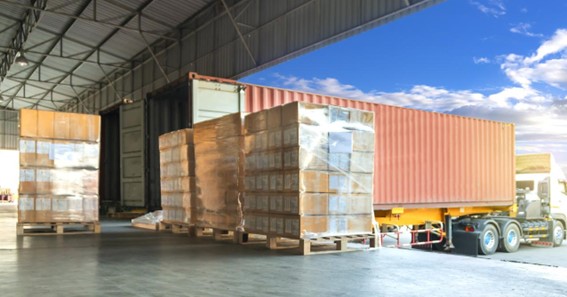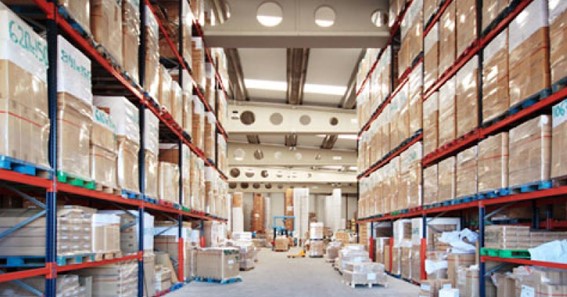Overstocking warehouse inventories is one of the major errors made by business owners. Overbuying is typically brought on by labor-intensive, imprecise, and expensive manual inventory and warehouse management systems. Your operating budget and, ultimately, your profit can be severely impacted by the expenditures of purchasing more inventory than you require, moving those things, and storing them.
What are the costs associated with inventory?
All costs related to placing orders, maintaining inventories, and controlling stock levels in a product-based business are included in inventory costs. Ordering costs, carrying costs, and stockout costs are separate categories into which total inventory expenses are commonly subdivided. Business owners and management frequently review or examine these figures to decide how much inventory to have.
- Cost of the Item
You can only estimate how much merchandise you have on hand if your inventory needs to be updated in real-time. As a result, you might spend more money than average on new products because you need to refill your stock.
For instance, if your inventory cost is inaccurate and you’re getting ready for an extensive sales period, like the Christmas season, you can buy a lot of merchandise at a higher price to have it in your warehouse before the holiday shopping season starts. However, you can already have many things in your warehouse without realizing it. You then find yourself overpaying for extras that you don’t need.
- Cost of Transportation

Costs associated with transportation are frequently considerable, particularly at specific periods of the year when fuel prices typically rise. Even if you don’t truly need those things to complete your inventory, you can spend a lot of money to bring fresh items to your warehouse. If your shipment of products fails to fulfill specific requirements, some shipping companies may impose an additional fee, which adds to the transportation cost. When those things are sold, higher-than-normal shipping charges will reduce your profit.
- Labor costs
When your ordered goods arrive, you’ll have to hire laborers to unload them and transport them securely to the warehouse. Those labor charges can mount up rapidly if you have a large purchase or heavy items. To create a place for the additional inventory items, the workers unloading the goods will also need to spend time rearranging the goods currently in the warehouse.
- Storage prices
You would incur charges to store new things in your warehouse if you added them to the inventory when you didn’t need them. A firm should be able to pay more to keep its inventory secure and in good shape. If your business is still tiny, the additional storage expense, on top of all the other expenditures related to excessive inventory, could seriously affect your finances.
- Cost of Lost Profit
It would be best if you sold more when your inventory is overstocked. For most firms, this entails holding a sale and sell surplus stock of the inventory from the warehouse and any associated carrying costs. However, you will generate less money on each item if you are compelled to reduce the price of the goods to get them out the door quickly. To get the goods out of your warehouse, you could even have to sell them at a loss.
Top mistakes to avoid while managing inventory
1. Undervaluing inventory control
Sadly, if you’ve heard someone say that inventory management is simple, they weren’t speaking from a position of authority. There is little about managing several sites, acquiring fresh inventory, interviewing job prospects, and analyzing new technology to integrate that is simple. The complexity of creating reports, eliminating fraud, and determining when things have vanished is not even mentioned.
Inventory management is still complex; it has never been simple, and never will be, even with capable, user-friendly tools. You do not need to believe this misconception given that inventory management can make or break a business.
2. Introducing a product, then taking care of inventories
Another widespread misunderstanding is that you can control your inventory once your company is up and running. The issue is that your inventory has already had a chance to become disorderly and harm your bottom line. Let’s say your firm launches and then decides to onboard an inventory management platform. Whether you like it or not, structuring your inventory well before your first sale is your best advantage. If not, you’ll inevitably encounter inventory problems (and associated costs) that could have been easily avoided.
Click here – What Is A Suit And Types?
- Considering a change to be difficult and time-consuming.
Any successful company’s core values revolve around innovation and change. It’s just a matter of time before a company needs to modify its thinking to experience growth and keep up with its rivals if it refuses to accept change willfully. Some online retailers feel that investing time, money, and effort into altering their current systems aren’t worthwhile. Even though putting in place an inventory management system can take weeks or even months, it is ultimately the best approach to increase productivity and boost sales for any firm.
4. Inventory management is not included in forecasting calculations.
Some businesses erroneously believe that they can forecast future sales by using only their historical sales data. This is false and might cost small businesses a lot of money they can’t afford to lose. Brands may increase the accuracy of their sales projections and monitor other important KPIs by adopting cutting-edge inventory management software. By making this change, you’ll be able to easily track the right sales trends, keep the proper amount of stock in your warehouse, determine which SKUs aren’t selling, and determine the lead time for inventory restocking.
- Assuming that professional inventory management is required
It can be incredibly constricting and unhelpful to limit order placement and inventory tracking to a small number of personnel. Your receiving and purchasing process may bottleneck if you assume that inventory tracking is only for “professionals,” which will ultimately delay the availability of goods to fulfill client orders. There is no reason other employees can’t take care of receiving, ordering, and delivering your products, provided that you have the appropriate software and are employing barcode scanners.
- Purchasing in bulk to save money
It’s crucial to keep in mind that buying in bulk only sometimes results in cost savings. For instance, money would be wasted if someone purchased bananas in quantity but only consumed some of them before they went wrong. Businesses can use the same guidelines. Your business will lose money on unsold goods or raw materials if you buy them in large numbers but only use them after they expire. But if you insist on buying in bulk, use forecasting data to determine what will sell (and what won’t).
Conclusion
Budgets for inventory aid businesses in avoiding wasted capital from useless commodities and inventory obsolescence. In the corporate world, several forms of inventory have a set shelf life. A corporation could be forced to liquidate its inventory at a discount if it purchases an excessive amount of inventory that needs to be sold within a certain amount. This reduces the company’s profitability and costs it money to acquire and maintain the inventory.
Click here – How to Get Real and Effective Tik Tok Likes?

